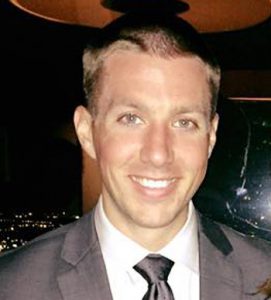 Rick Keilty enjoyed the technical challenges his job presented him, but was missing the bigger picture. How do you develop and test scalable software? And how do you approach developing that software when no software has been built?
Rick Keilty enjoyed the technical challenges his job presented him, but was missing the bigger picture. How do you develop and test scalable software? And how do you approach developing that software when no software has been built?
“It’s like starting from a blank slate,” Keilty says. “The skills I gained at Northeastern taught me how to take that blank slate and really build from it.”
Keilty enrolled in Northeastern’s Master of Science in Computer Science program to learn the basics of architecting, so he could help drive the solutions his software engineering team was building at Vistaprint forward. By day, he was focused on the deep implementation of the printing company’s software; by night, he was thinking about the scalability and future of the system.
“During the day, I was heads down, focused on programming,” Keilty explains. “At night, professors were saying, ‘Let’s start looking at a larger, more holistic picture. How do you start designing software to grow appropriately over time?’”
Keilty’s master’s degree program prepared him to design and maintain large application software, and he learned more about not just how to program, but how to program well.
“I could take a lot of that back to my office and increase my influence there,” says Keilty, who advanced from a software engineer at Vistaprint to senior lead software engineer. “The program showed me a different side of software engineering totally different from my day-to-day work, and there was an immediate impact career-wise.”
Keilty completed project-based work in every course he took; he hacked real systems in his security courses and built out a piece of software over the course of one semester. Professors discussed the challenges they were facing in their own careers and provided students the opportunity to gain additional hands-on experience by integrating their research into the classroom.
“Professors consistently took deep, technical dives into their areas of expertise, and made sure to tie it back to real-world examples,” Keilty says. “Their use of real-world examples, and incorporating students’ current work experiences into their lessons, allowed me to bring new ideas to the workplace that were directly applicable to the problems we were facing.”
Those lessons are still applicable to the role he’s in today. Keilty left Vistaprint in October 2014 to become a senior software engineer at Boston consulting startup HourlyNerd, which connects businesses to experienced professionals and MBAs. When he joined HourlyNerd, there was little code and infrastructure to work with, because the company was so new, but Keilty felt confident he could build scalable software the right way.
“The skills I learned at Northeastern helped me identify what to tackle the first 30 days in a startup, the first six months, and then the first 12 months,” Keilty says. “I could take that blank slate and help craft it into the world-class engineering work we have today.”
The Master of Science in Computer Science program prepared Keilty for the startup environment, which often requires employees build something from nothing. As he continues to advance in his career, Keilty envisions eventually serving as the technical co-founder of a company.
“When you build good pieces of code and technology, there’s an art behind it,” Keilty says. “Before, I could take a blueprint or instruction from someone else, but I couldn’t start architecting a great piece of software by myself. Now I can build out complex pieces of software. A master’s program can teach you how to perfect the craft.”






Related Articles
Why Earn a Professional Doctoral Degree?
5 Tips to Get the Most out of Grad School
Is Earning a Graduate Certificate Worth It?